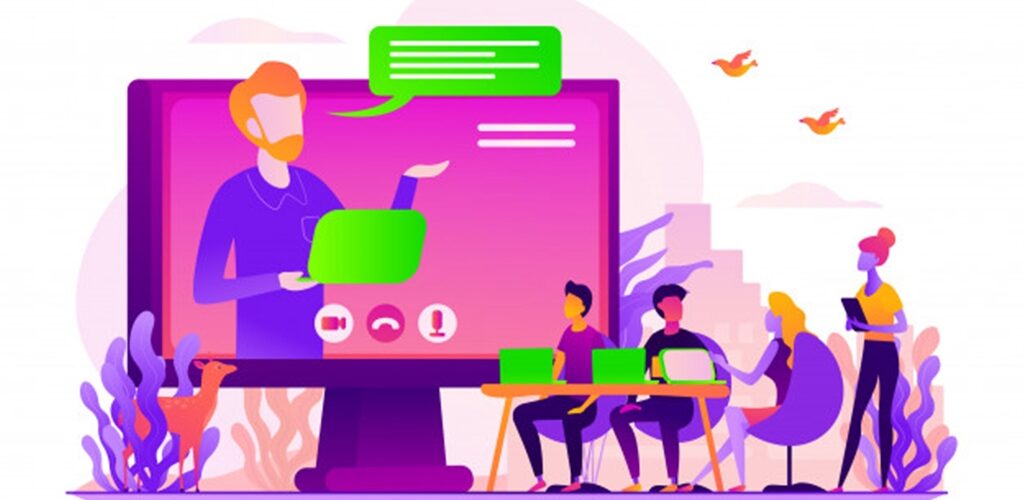
Onboarding Reimagined: How AI Can Build a Stronger Workforce
September 18, 2024
Solving the Compliance Challenge: The Role of AI and Learning Solutions in European Banking
September 26, 2024Author

Sahil Samtani
There is no doubt that Corporate Learning has a strong social element to it. Learning occurs through social interactions across conference tables, in cubicles, over coffee breaks and at the water cooler. The power and reach of social interactions for learning cannot be overlooked, but the big question is: Is there a way to structure it better to enhance the learning experience? The answer is ‘Yes’! With the help of technology, it is now possible to facilitate social interactions and derive meaningful learning across geographical boundaries and diverse audiences.
However, it is important to note that social interactions cannot be forced. So, before starting a social learning initiative, identify individuals or groups who have a genuine shared purpose, need, or interest. If they find a shared ground, only then will the actual learning take place. A powerful social learning strategy is through sharing experiences.
Even though most experiences are personal, there is a lot of learning that can be derived from them as well. Learners do not have to do any background study or extra work for sharing, so they are more open to the concept of sharing. Experiences are gathered during the course of work and are often lost. But they can be transformed into learning instances for fellow learners. In addition, sharing behaviour is a source of pride in one’s work and accomplishment. So this type of social sharing comes most naturally to most learners. There are various ways to encourage social sharing and derive learning from it.
- Sharing Photos: Taking a photo and sharing it instantly is easy these days. Even the most basic models of mobile devices have cameras and users can take good quality pictures. Learners can be encouraged to share a bit of their experiences from time to time through pictures. For example, pictures of shelves or point-of-sales material can be shared by the retail sales teams who go on regular market visits. The images can be shared and each member of the team can keep adding pictures to create an image repository. Comments can be invited to point out pictures that stand out and the ones that are not up to mark. This would also help other teams visiting the market get a better feel of different outlets, their strengths as well as weaknesses.
- Sharing Audio: The audio recording feature of mobile devices or other handhelds can be utilized to record findings or observations in the field. Or a short audio recording may record first impressions of a client or a strategy that worked with a particular customer. These findings can be shared on a social sharing portal. To maintain the usefulness of audio recordings, instructors can ask the learners to keep the recordings within a pre-decided time limit and weed out the ones they deem repetitive or not useful. One or more such recordings can be played together to form a ‘lesson’. Instructors can utilize audio recordings as a precursor for debates and discussions.
- Sharing Video: Videos are also a powerful mode of learning and can be shot well with the available equipment – a webcam, handheld device or even a phone. Recorded videos should essentially relay what the learner has done or accomplished and how. It can be ‘talking head’ video where the learner talks about his experiences. Or alternatively, the learner can actually demonstrate a skill or technique and share it with his peers. This is an impactful way of learning and an inexpensive one as well. Professional videos require larger budgets, but sharing videos can be made by the learners themselves. Since sharing experiences is the main objective, nobody minds if the video is a bit shaky or the picture not too clear in parts.
- Sharing through Discussions: Discussions take place within a social learning platform in a lot of ways – through discussion boards, live chats, virtual classrooms, and so on. Instructors can act as facilitators who make sure that the topic of discussion remains relevant and the knowledge shared can be understood well by all. A popular way to encourage sharing is to dedicate a day for a ‘huddle’. This session can be focused on each individual or team to discuss the learning acquired over the week. The discussions can also revolve around the accomplishments that have made their endeavours successful. It can also be lessons learnt in ‘what not to do’. This helps fellow learners take inspiration from their successes as well as learn from their mistakes. Since these discussions are not part of any formal sessions, learners are more inclined to share freely and bring out the true nitty-gritty of work into the learning space. Many portals allow discussions to be saved as well. A repository of discussions can be created over time to help future learners as well.
Sharing experiences is not a new way of learning, but with technology the scope of sharing increases manifold. This mode of learning works for most industries and verticals, but sales and retail are sectors where it has been especially successful. Sharing is a natural behaviour and it aligns with the preferred way that most learners choose to learn. The best benefit derived out of it is that the learning is not forced and hence, immensely impactful.
Related services
Product Engineering



